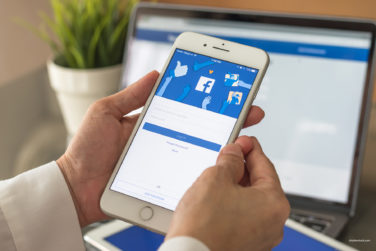In the last six weeks, my mother has opened an online grocery account, my friend has downloaded an app to help him organize virtual parties, and my nephew’s piano teacher began offering lessons using a remote digital platform. COVID-19 is driving an urgent need for us all to function remotely and online, and in doing so it has prompted a lot of head-scratching as people try to figure out how to navigate this environment and their role in it.
Business leaders have started to update their thinking about how their business can survive, and then thrive, in a landscape dominated by remote engagement. How can we steer through this crisis and how will businesses operate in the future? Already there is talk of a “new norm” and, of course, there will be a required shift in organizational culture and leadership mindset to support this. “Remote” will need to be celebrated as a principle that boosts company efficiency, and new roles and capability mixes will emerge as a result.
In pharma, we are not immune. When stay-at-home orders came down the pike, many parts of the industry were thrust into the remote working environment with little to no preparation. Field teams have been grounded, clinical trials are beset with new complications, and the longevity of COVID–19 restrictions is up for debate. Some people have found the switch to conduct the core functions of their job remotely relatively easy, while for others, it is much more complex.
As local and federal governments outline plans to lift some of the restrictions, we will continue to see changes in how we work and engage. But one thing is certain—remote environments are not going away.
This pandemic accelerated an inevitable shift in the landscape. We will never return to the way it was, however, the balance between remote and in-person interactions will evolve. Leaders need to prepare their teams and evaluate their businesses now to adjust to the ever-changing reality or be left behind.
Seize the Opportunity to Stand Out
Recent statistics show huge increases in usage of remote platforms. Zoom’s own traffic data tells us that in March 2020 they saw more than 200 million daily meeting participants versus less than 10 million just three months prior. Thought leaders talk of Zoom fatigue and already there are numerous articles about this new phenomenon.
One key reason for so called Zoom fatigue is that although video interaction can seem to be much like in-person interaction, it is actually very different. Our subconscious is working much harder in video platforms to notice and process non-verbal cues. In addition, we place increased focus on the pace, pitch, and tone of the voices we hear.
If we pause to consider how we can use this information to adapt our behavior for the benefit of those we interact with remotely, it provides us with a real opportunity to stand out.
We can consider how to set the stage for remote interactions so that our audience’s brain doesn’t need to work on overload to understand the message we are communicating. For example, make sure people on the other side of the screen get a good view of your face and ensure your background minimizes distractions. Due thought should also be given to how you will introduce yourself, the words you will select, and the tonality you will choose to ensure you have the desired impact.
These things may seem trivial, but your stakeholders are seeing a huge increase in the number of people who want to connect with them remotely. Use the opportunity you are given to create a true connection and value so they will want to continue to engage.
Recent industry surveys predict remote working will account for anywhere from 30% to 50% of all business interaction over the next three to five years. Now is the time to ensure your teams can be effective in this environment so that your brand can continue to move forward and excel in the remote engagement shift. If you don’t have the capability in-house, look for partners with extensive experience in remote engagement. Whether it be to train your existing teams or to hire remote experts as extensions of your team, you will need to have remote engagement expertise across the product lifecycle—from scientific engagement to sales to patient education and support.
The Lines Continue to Blur
Our industry derives from a time when we firmly differentiated between in-person communication and remote communication. Companies have teams of field specialists who travel to important stakeholders and conduct in-person meetings. Since remote engagement’s emergence in the 1990s and evolution from that point, many companies have also employed teams of office-based specialists conducting remote engagements.
Prior to COVID-19, these lines had just begun to blur with the emergence of “hybrid roles” in clinical, medical, and commercial arms of companies. As the pandemic-related restrictions ease, the prominence of the hybrid role will only accelerate as access to HCPs continues to decline, remote platforms advance, and remote engagement skillsets grow, minimizing the impact gap between in-person and remote engagement.
From now on, specialist communicators will be expected to engage with stakeholders and achieve objectives through all communication channels.
Facing the Challenges of Virtual Environments
The number of virtual teams (those teams that do not get together in the same place to perform their work) will increase as organizations are experiencing first-hand the benefits of enabling employees to work from remote locations, such as reduced overhead and expenses, elevated employee satisfaction with more work/life balance, and even the environmental impact of less commuting.
Many studies have highlighted the pitfalls of leading virtual teams. One such example is the loss of the “human touch” in remote people management, so topics such as emotional intelligence, managing performance, and leadership will now require a remote focus.
Virtual learning and professional development will play a big role in the success of virtual teams and remote engagement programs. Companies need to look for curricula and training facilitators that have proven experience in remote environments—both to upskill your teams on how to engage effectively through remote channels and to ensure your leaders can manage and engage their teams virtually. Otherwise, the remote shift will not pay off for the business and can actually end up increasing both cost and risk as you deal with higher attrition rates, lower productivity, and poor performing programs.
This is the Time to Act
We expect to see an increased focus on dynamic programs and initiatives with the immediate needs of stakeholders at the forefront. Whether you leverage in-house teams or out-source to partners, the programs and solutions provided must be nimble and resilient enough to meet changing needs. Flexibility and speed will be king.
The companies that see the advantages presented by the new norm and prepare now for the continued evolution will be well-positioned for success. They know that if they want to remain relevant, they need to learn fast and act faster.
How can we be confident that the remote revolution is here to stay when we know we will be rid of COVID-19 one day? Consider the budget adjustments caused by COVID-19, the benefits and savings companies already identified from virtual environments, and innovative industry leaders who fully embrace the digital age. This shift to remote environments was already underway before the pandemic hit—COVID-19 just gave it a huge push.
The smart companies are preparing for long-term success and embracing remote engagement by providing their teams with the development and support they need and building remote capabilities into their business strategy. Others will stand by and watch employees, HCPs, and patients slip through their fingers.









